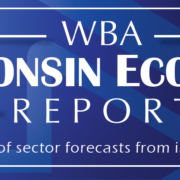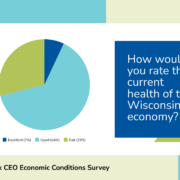Housing Market Slows as Demand Cools and Inventory Remains Tight
 Wisconsin REALTORS® Association
Wisconsin REALTORS® Association
By Michael Theo, WRA President and CEO
With insights from Dave Clark, economist with Marquette University
After two straight years of record home sales, the Wisconsin existing home market slowed significantly in 2022. This was a result of both declining demand and continued weak housing supply. Demand slowed in part because the economy weakened slightly in the first half of the year. Specifically, the real (inflation adjusted) GDP fell 1.6% in Q1 of 2022, and it slowed 0.6% in Q2 before rebounding by 2.9% in the third quarter. Still, the labor market remained at full employment which likely presented the National Bureau of Economic Research from classifying the slowdown as an official recession. What really slowed demand was the rapid decline in housing affordability. In October of 2021, a Wisconsin buyer with median family income qualified to buy 201% of the median priced home in the state, assuming a 20% down payment and the remainder financed by a 30-year fixed-rate mortgage at the rates that existed at that time. Just 12 months later, that same buyer would only qualify to purchase 136% of the median priced home. Although median family income was estimated to have grown by 6.2% over that 12-month period, that was offset by a 6.1% increase in the median housing price, and a more than doubling of the 30-year fixed rate mortgage, from 3.07% in October 2021 to 6.90% in October 2022. Weakness on the supply side only exacerbated the problem with total listings in October 2022 down 24% compared to that same month in 2021. Overall, through the first 10 months of 2022, home sales were off their 2021 pace by 11.2%. Even though sales have weakened significantly, this remains a strong sellers’ market with just 2.6 months of available supply in October 2022, which is well below the six-month benchmark that signals a balanced housing market.
One reason the mortgage rate rose so quickly is because inflationary expectations, which lenders must consider when extending long-term credit to homebuyers, have increased in the past year. That is, inflation is no longer viewed as transitory. As a result, the Fed has taken decisive action to slow the economy and reduce inflation. The Fed’s primary tool to slow inflation is to increase the short-term federal funds rate, which is the rate that member banks lend to each other to cover overnight reserve shortfalls. Specifically, the upper limit of the federal funds target range rose from near zero (i.e., 0.25%) at the beginning of 2022 to 4% by early November. The good news is that there has been some slight improvement in headline inflation, which peaked in June 2022 at 9.1% and fell to 7.7% by October. Hopefully that trend continues. Still, inflation remains well above the Fed’s target inflation rate of 2% and the Fed has indicated that it intends to keep raising short term rates until inflation is under control, even if its actions lead to recession. Given that the U.S. and Wisconsin labor markets are currently at full employment (i.e., both were under continue its upward movement of the federal funds rate. Until inflationary expectations are lowered, mortgage rates will remain elevated and affordability will remain low. This, combined with tight inventories, will constrain the housing market in 2023.
Nationally, policymakers need to maintain their focus on the inflation problem. Clearly the Fed is committed to controlling inflation, but Congress and the Biden Administration need to avoid exacerbating the inflation problem through irresponsible spending practices. While there is little that local policymakers can do to stimulate the demand side of the housing market, they can help set the stage for new construction once the housing sector begins to improve. This includes lowering the regulatory burden and helping to foster growth in training in the building trades.
Founded in 1909, the Wisconsin REALTORS® Association (WRA) is one of the largest trade associations in Wisconsin. It represents and provides services to more than 15,000 members statewide. WRA’s goal is to promote the advancement of real estate in Wisconsin and provide cutting-edge tools to help REALTORS® enjoy a successful career and be competitive in their market.










